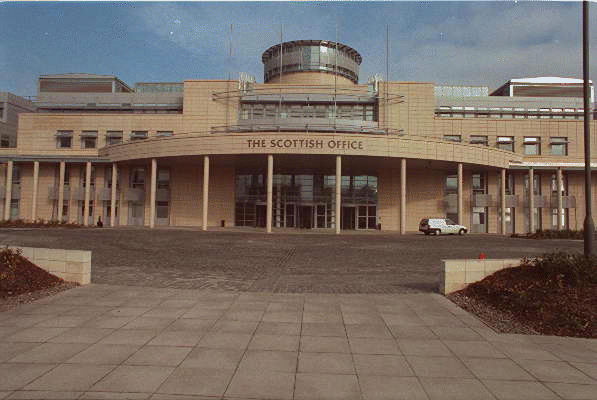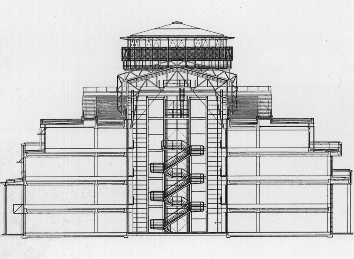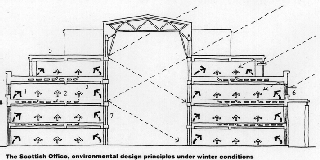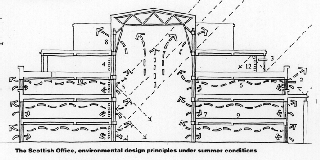Daylight-Europe Simulation Case Study:
Victoria Quay, Leith, Scotland
For a detailed description of the building, the model, the simulations
and the result, please consult the report:
Clarke J A, Hand J, Janak
M and Johnstone C, 1997. "Daylight-Europe Project. Simulation
Case Study: Victoria Quay, Leith, Scotland", University of Strathclyde,
ESRU Report.
Victoria Quay - Scottish Office building in Edinburgh. The major issues
are: daylight utilization and summer heat gains.
 The Building
The Building
 |
Office building for the Scottish Office. The building
comprises a number of individual office
blocks connected by an internal galleria.
An individual block consists of shallow office accommodation, grouped around
a central atrium. The case study focuses
on the second and third floors adjacent
to the central atrium. |
Location
Building fabric
-
Bearing Load construction
-
column system, concrete, steel construction
-
Building envelope
-
Sandwich construction including stone concrete 0.17 cm, air gap 0,055
m, glasswool 0.1 m and white concrete 0.17 m; U-value of the external walls
is 0.32 W/m2K.
External windows are double glazed with standard 6 mm glazing. There
are shading elements above the windows.
The roof is designed as an inverted concrete roof.
Usage and environmental systems
-
Lighting
-
On each level, six rows of luminaires are
split between four rows of dimming fixtures (adjacent to the atrium and
the south facade), and two rows of fixtures in the core, all on during
occupied hours. The lighting is controlled by timed functions in the BEMS:
off before 6:00, 25% on between 6:00 and 7:45 and fully on from 7:45 to
17:45.
-
Electrical appliances
-
The small power loads are above normal load density at 21 W/m2 and assumed
to be on from 8:00 to 18:00 during weekdays.
-
Occupants
The occupied space density per person is 15m2 or 6 W/m2
(equivalent to 90W sensible heat emission) during the occupied period 8:00
to 18:00 during weekdays. It is assumed, that the building is not occupied
at weekends.
HVAC systems
-
Heating
-
The building is heated by radiators in the offices facing the atrium
and adjacent to the south facade. Gas fired boilers are used for the heating
supply. Major of heat losses is covered by heat gains from lighting and
other casual gains.
-
Ventilating, Air conditioning
-
In the considered part of the building is displacement ventilation.
A mixture of fresh and recirculated air is supplied to the floor plenums
and tempered to 17C. The displacement ventilation can be used for night
purge cooling and to augment natural ventilation. The building is designed
to allow natural ventilation by openable windows in the occupied space.
Atrium ventilation is controlled centrally. There is no cooling provision
in the building (except for dining and computer rooms which are not included
in this analysis).
| Winter performance |
Summer performance |
 |
 |





